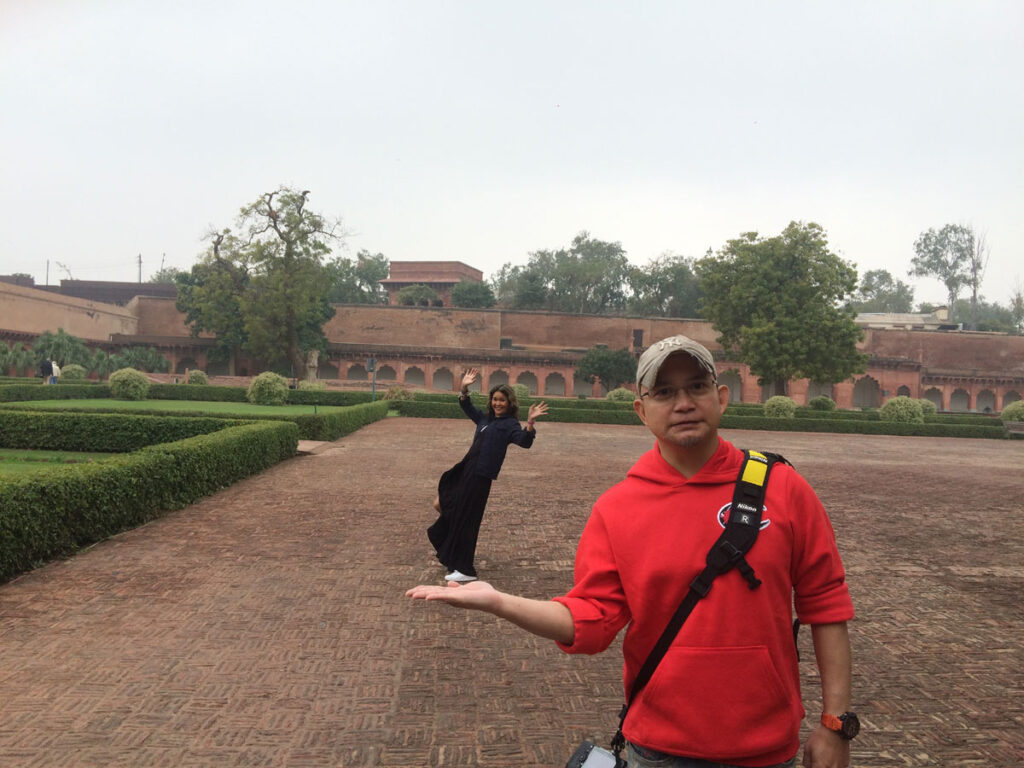“Agra: Unveiling the Marvels of History, Culture, and Culinary Excellence”
Nestled along the banks of the Yamuna River, Agra is a city that resonates with history, where the echoes of emperors and their grandeur are still heard in the whispers of the wind. As you journey through this timeless city, you’ll find yourself immersed in a tapestry of experiences that reveal the rich layers of Agra’s heritage, cultural vibrancy, and delectable cuisine. Join us on an extended exploration of this enchanting destination as we embark on a journey through the heart of Agra, delving deeper into its captivating attractions, savoring its culinary delights, and immersing ourselves in its vibrant culture.
1. Taj Mahal: A Timeless Symphony of Love and Architecture
Our odyssey commences at the Taj Mahal, a UNESCO World Heritage Site, and one of the most celebrated architectural masterpieces globally, often described as a “teardrop on the cheek of eternity.” This ivory-white marble mausoleum stands as an immortal testament to the enduring love of Mughal Emperor Shah Jahan for his cherished wife, Mumtaz Mahal. As you stand before its iconic façade, the intricate carvings, delicate pietra dura work, and its perfectly symmetrical design will leave you awestruck.
Delving deeper into its history, you’ll uncover that the construction of the Taj Mahal was an extravagant endeavor, with a workforce of over 20,000 artisans and architects dedicating themselves to this labor of love. These skilled craftsmen exhibited extraordinary precision in executing the Mughal architectural style, blending intricate Islamic and Persian design elements into a harmonious whole. The Taj Mahal’s allure extends beyond its visual splendor, as it carries a story of love and artistry interwoven to create a monument of unparalleled beauty.
Timings: Open six days a week from sunrise to sunset. Only on every Friday Taj Mahal is closed.
2. Agra Fort: An Epoch of Power and Majesty
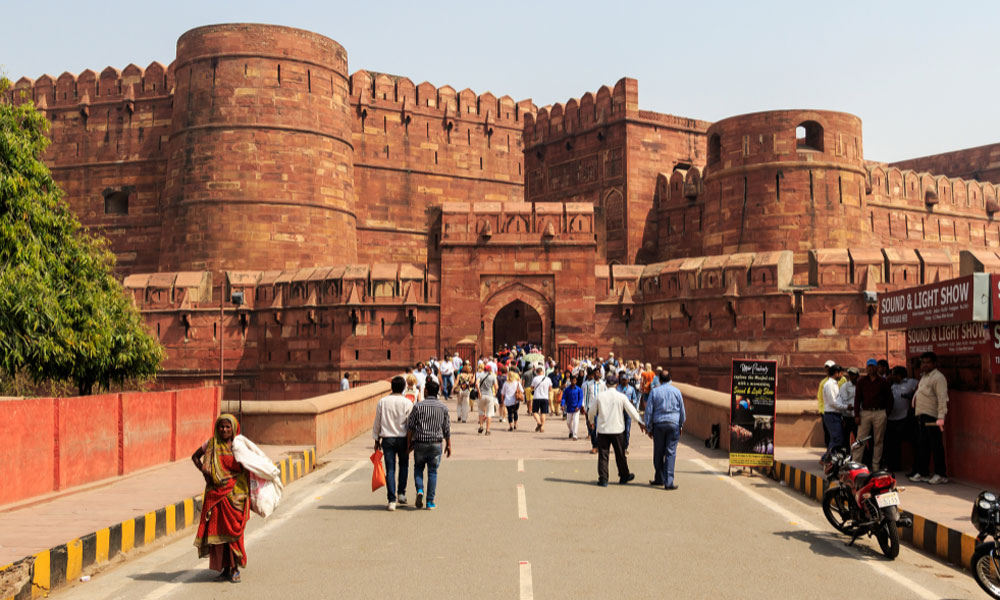
A stone’s throw from the Taj Mahal, Agra Fort, a UNESCO World Heritage Site, stands as a formidable symbol of Mughal might and grandeur. This imposing red sandstone fort was commissioned by Emperor Akbar in the 16th century and served as the political and military nucleus of the Mughal Empire for over 250 years. As you wander through its vast courtyards, ornate palaces, and historical audience halls, you’ll hear echoes of history whispering tales of emperors, courtly life, and pivotal battles that shaped the destiny of a nation. Ascending the ramparts, you can soak in panoramic views of the city, envisioning the bustling life that once unfolded within these formidable walls. Agra Fort is a testament to the political and strategic brilliance of the Mughals, their architectural prowess, and the intricate fusion of Persian, Islamic, and Indian elements.
Timings: Open on all days from sunrise to sunset.
3: Anguri Bagh: Explore The Charming Garden
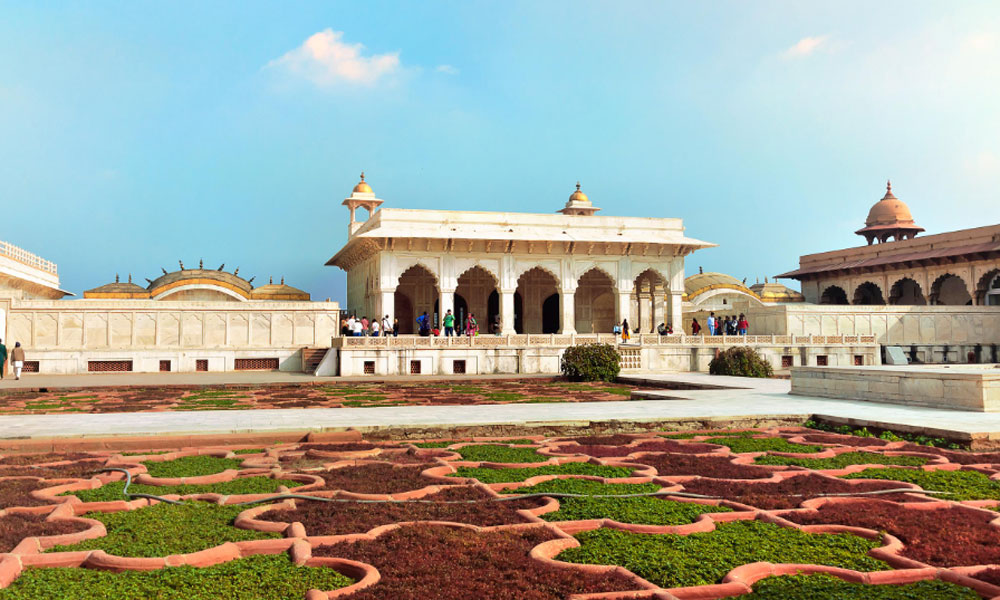
This elegantly constructed garden overlooking Khas Mahal has small hexagonal red sandstone grids designed in a distinctive pattern. Surrounded by two-story sandstone buildings topped with white limestone, it offers breathtaking sights. This Bagh is a historical gem of Agra and is frequented by locals and tourists alike.
Timings: Open on all days from sunrise to sunset.
4. Fatehpur Sikri: A Ghost Town of Splendor
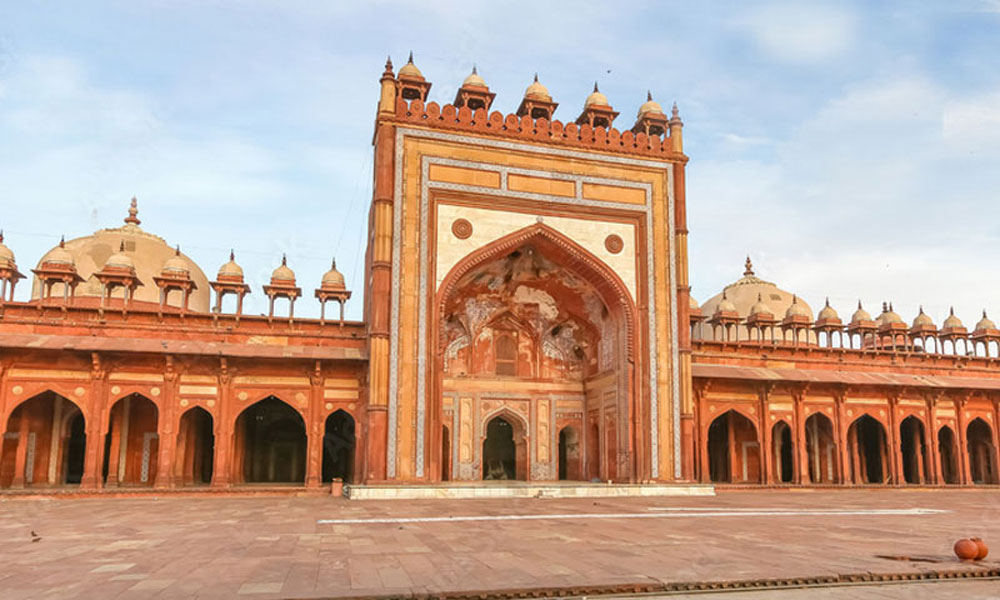
Venturing further into Agra’s historical treasures, we arrive at Fatehpur Sikri, a UNESCO World Heritage Site and an astonishing example of Mughal architecture and urban planning. This city was constructed by Emperor Akbar in the late 16th century, was once the vibrant capital of the Mughal Empire.
As you explore its palaces, mosques, and courtyards, each adorned with intricate carvings and inlaid work, you’ll be transported to a time of opulence and grandeur. The Jama Masjid, one of India’s largest mosques, stands as a testament to the grandeur of Mughal religious architecture, while the Panch Mahal, a five-story palace, offers breathtaking views of the surrounding countryside. Fatehpur Sikri’s intriguing mix of architectural marvels and its eventual abandonment make it a compelling chapter in Mughal history.
Timings: Open on all days from sunrise to sunset.
5. Mehtab Bagh: A Riverside Paradise with Taj Mahal Views
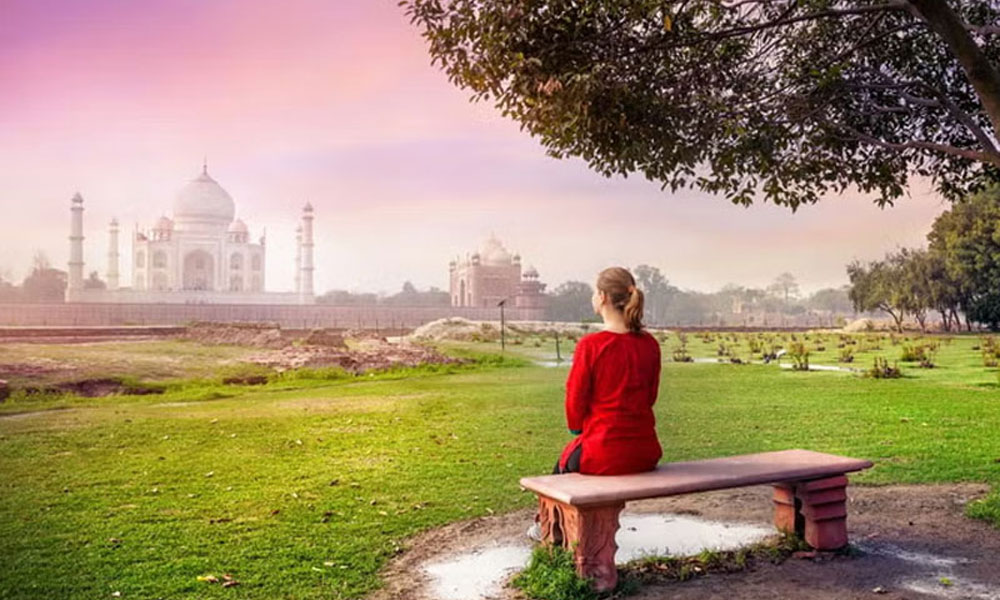
Nestled on the opposite bank of the Yamuna River, Mehtab Bagh emerges as a hidden gem in Agra’s treasure trove of enchanting gardens. This garden complex offers an unparalleled vantage point to behold the mesmerizing Taj Mahal in all its splendor. As the golden rays of the sun grace the iconic marble masterpiece during sunrise or cast a warm, romantic glow upon it at sunset, Mehtab Bagh stands as a favorite haunt for photographers and connoisseurs of scenic beauty.
The allure of Mehtab Bagh lies not only in the breathtaking views it affords but also in its tranquil ambiance. A leisurely stroll amidst the lush greenery, where fragrant blossoms and manicured lawns reign supreme, is a refreshing escape from the hustle and bustle of city life. The garden’s symmetrical layout, inspired by the grandeur of Mughal garden design, adds a touch of historical elegance to this natural paradise. As you wander through the pathways, you’ll feel as though you’ve stepped back in time, experiencing the same vistas that once captivated the Mughal emperors themselves.
Timings: Open on all days from sunrise to sunset.
6. Itmad-ud-Daulah’s Tomb: The Delicate Predecessor to the Taj Mahal
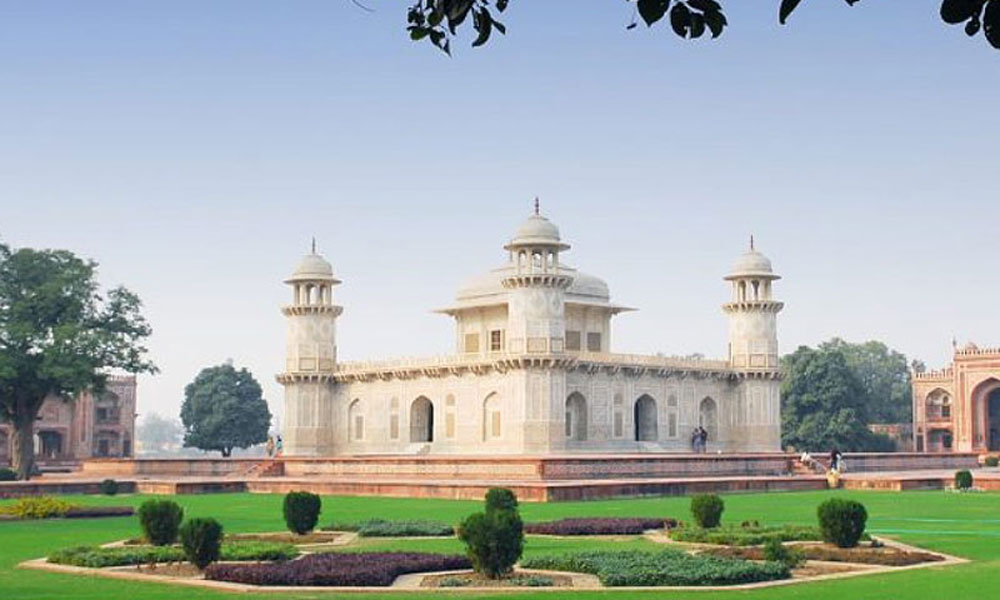
Often affectionately referred to as the “Baby Taj,” the Itmad-ud-Daulah’s Tomb is a mausoleum that predates the iconic Taj Mahal. While it may not boast the same grandeur, this exquisite structure has its own unique charm that captivates visitors with its intricate marble work and serene ambiance.
The tomb is the final resting place of Mirza Ghiyas Beg, who holds the distinction of being the grandfather of Mumtaz Mahal, the beloved wife of Emperor Shah Jahan. As you explore this delicate masterpiece, you’ll marvel at the meticulous craftsmanship that adorns every surface. The fine inlay work, intricately carved lattice screens, and delicate floral motifs are a testament to the artistry of the Mughal era. The delicate beauty of Itmad-ud-Daulah’s tomb makes it a serene and contemplative site, offering a glimpse into the artistic influences that would later culminate in the creation of the Taj Mahal.
Timings: Open on all days from sunrise to sunset.
7. Akbar’s Tomb: A Regal Resting Place in the Suburbs of Agra
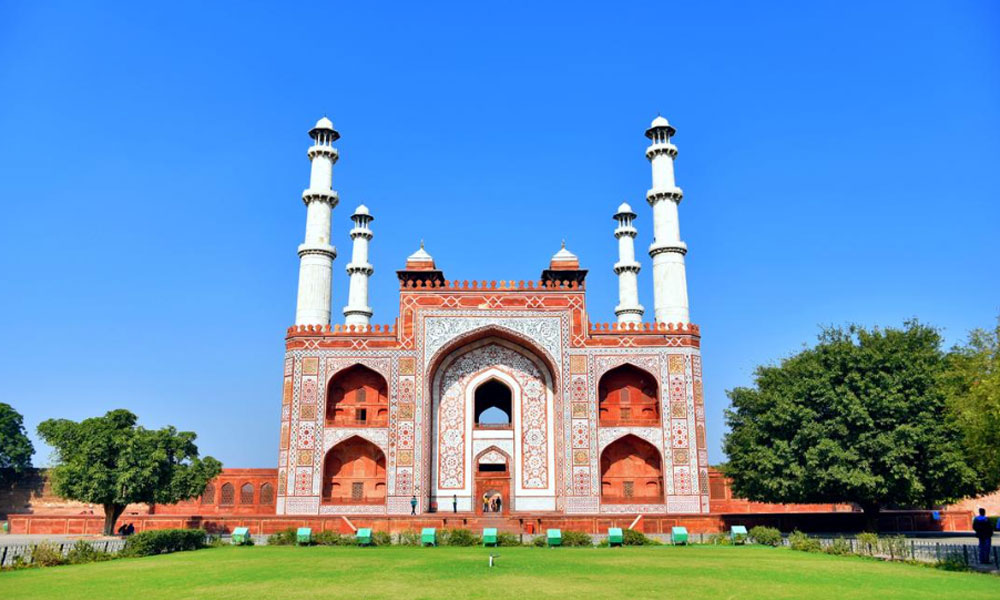
Located in the serene suburb of Sikandra, Akbar’s Tomb stands as the final resting place of one of the most influential Mughal emperors, Emperor Akbar. This impressive mausoleum is a harmonious blend of various architectural styles, reflecting the diverse influences that shaped the Mughal Empire. As you approach the tomb, you’ll be struck by the regal grandeur of the red sandstone and white marble edifice. The architectural elements are a fusion of Islamic, Persian, and Indian styles, showcasing the cultural syncretism that defined the Mughal era. The surrounding gardens, meticulously planned and maintained, provide a tranquil setting for visitors to explore and reflect on the history and legacy of Emperor Akbar.
Akbar’s Tomb, much like the emperor himself, embodies a sense of tolerance, intellectual curiosity, and a love for art and culture. It’s a serene and historic site that beckons travelers to delve into the past, appreciating the contributions of one of India’s most celebrated rulers.
While the Taj Mahal certainly steals the spotlight in Agra, the city’s lesser-known attractions, such as Mehtab Bagh, Itmad-ud-Daulah’s Tomb, and Akbar’s Tomb, offer a deeper and more nuanced understanding of Agra’s rich history and architectural heritage. From the serene beauty of Mehtab Bagh and the delicate charm of the Baby Taj to the regal majesty of Akbar’s Tomb, each of these hidden gems provides a unique perspective on the Mughal legacy that continues to captivate travelers from around the world.
So, as you plan your journey to Agra, consider exploring not only the world-famous sites but also these hidden treasures that add depth and dimension to your experience of this culturally rich city. Whether you seek tranquil gardens, delicate artistry, or a glimpse into the lives of Mughal emperors, Agra’s hidden gems are waiting to be discovered, promising a more profound connection with India’s historical and architectural heritage.
Timings: Open on all days from sunrise to sunset.
8. Dayal Bagh: The Garden of the Merciful
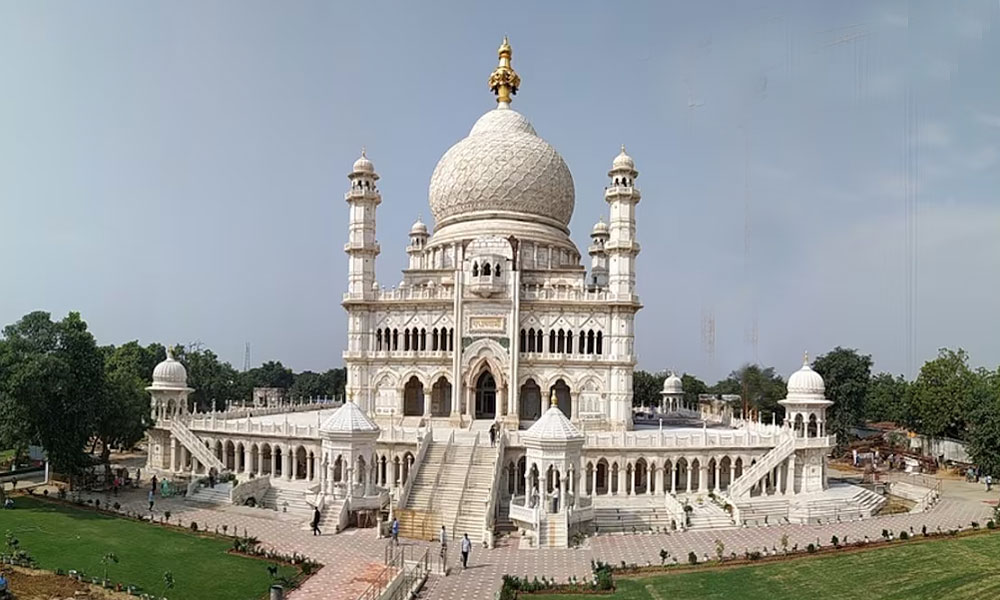
This magnificent landscape, which literally translates as “Garden of the Merciful,” draws large crowds from all over. The samadhi of “Swamiji Maharaj,” the man who created Radha Swami, is housed at this location, which is close to Soami Bagh. Constructed entirely of white marble, this graceful building showcases superb artwork and exquisite pietra dura inlay work on the inside walls. This location is very significant historically and spiritually.
Timings: One can visit this place from 6:00 am to 6:30 pm on all days.
9. Enjoy The Sunset On Yamuna River While You Boat through It
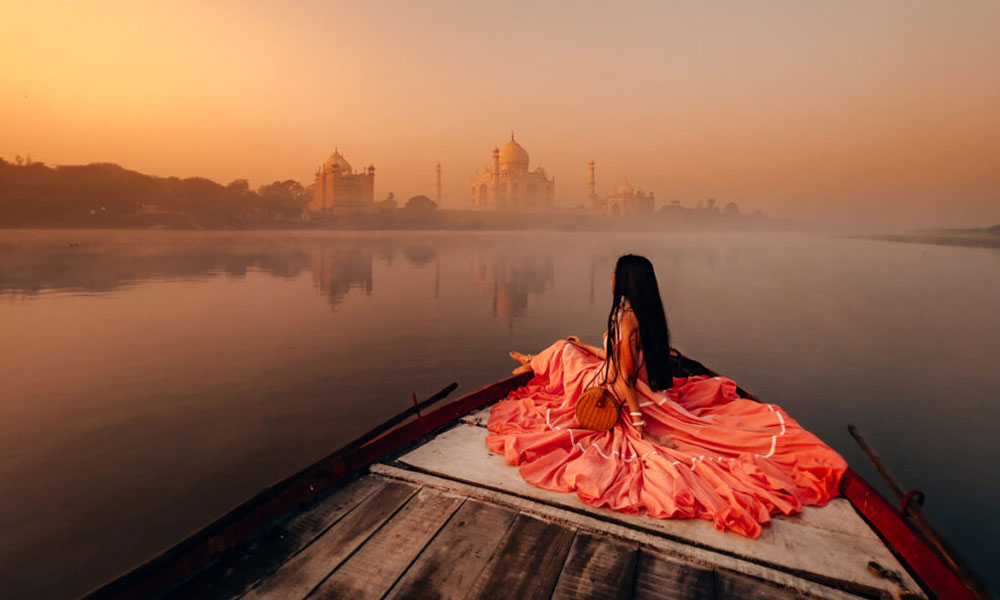
You will be enthralled by the Taj Mahal’s beauty after this boat journey. You will see a seductive scene that will enchant you as you cruise the Yamuna in the middle of the Wonder of the World. When the sun is setting and the Taj Mahal is in view, it is a sight to behold. If you happen to be in this city,
Timings: Open on all days from sunrise to sunset.
10. Kinari Bazaar: Immerse Yourself in Agra’s Cultural Tapestry
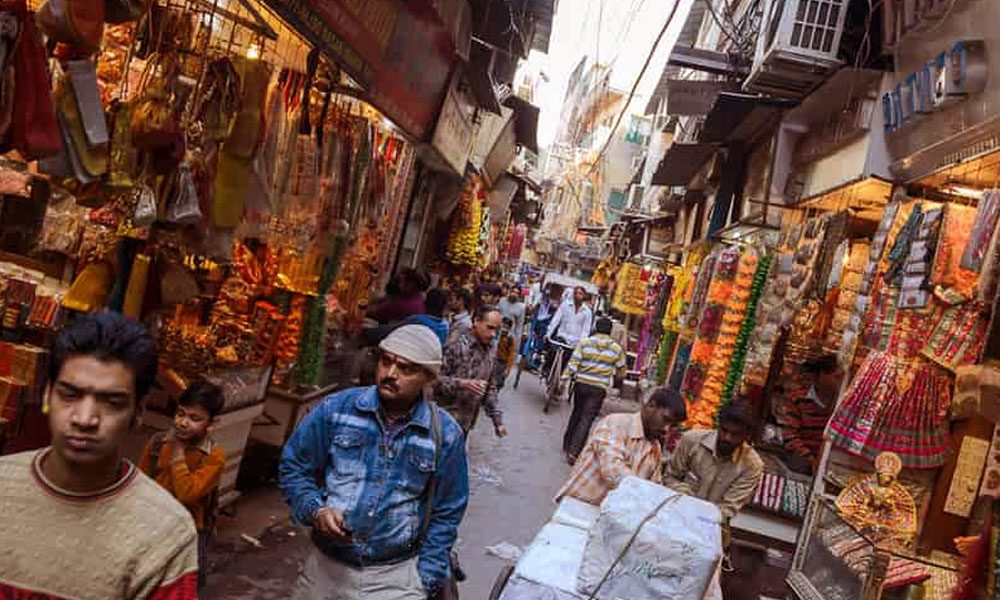
Agra’s cultural tapestry is woven with vibrant textiles, traditional handicrafts, and captivating performances. A visit to Kinari Bazaar is a must, where the bustling marketplace overflows with embroidered fabrics, intricate leather goods, and colorful jewelry. This is where you can witness the craftspeople at work, meticulously creating pieces that have been passed down through generations.
11. Kalakriti: The Mughal Era Dance Drama Show
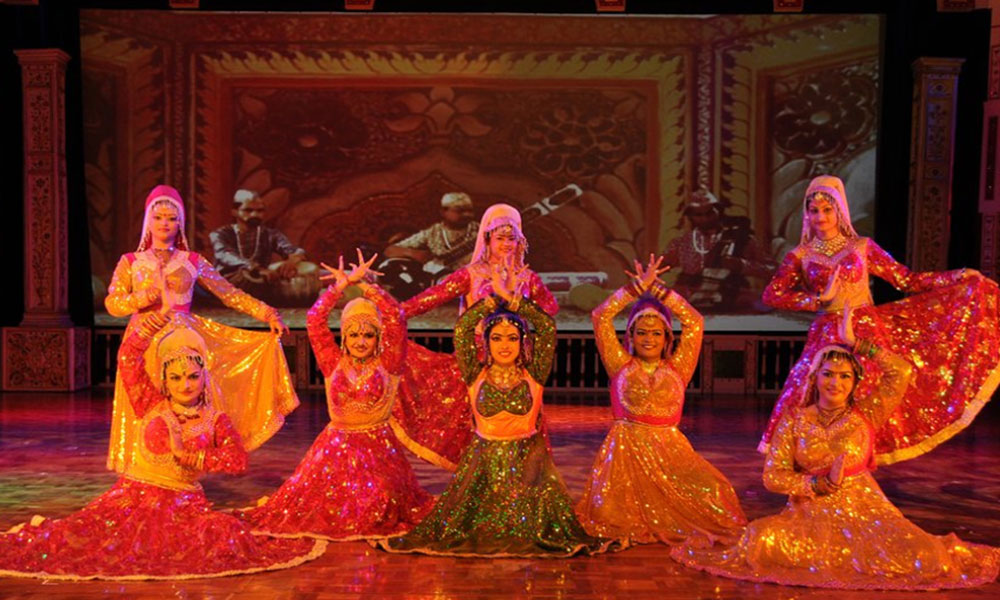
For a mesmerizing cultural experience, don’t miss the Kalakriti dance drama show, a performance that brings to life the rich cultural heritage of India through dance, music, and storytelling. Seeing Mohabbat The Taj, a Kalakriti dance drama, is one of the top things to do in Agra. With their energetic performances, the artists’ superb dramatics will transport you to the Mughal Empire. This intense show, which features 80 artisans and cutting-edge technology, lasts for almost one hour and twenty minutes and has a colorful appearance. There are three grades of seats available here: silver, gold, and platinum.
The show is a visual and auditory feast that will transport you through the ages, providing a deeper understanding of India’s diverse traditions.
Timings: The opening hours are 10:00 am to 8:15 pm from Monday to Saturday and 10:30 am to 9:00 pm on Sunday.
12. Mankameshwar Mandir: The Divine Temple of Lord Shiva
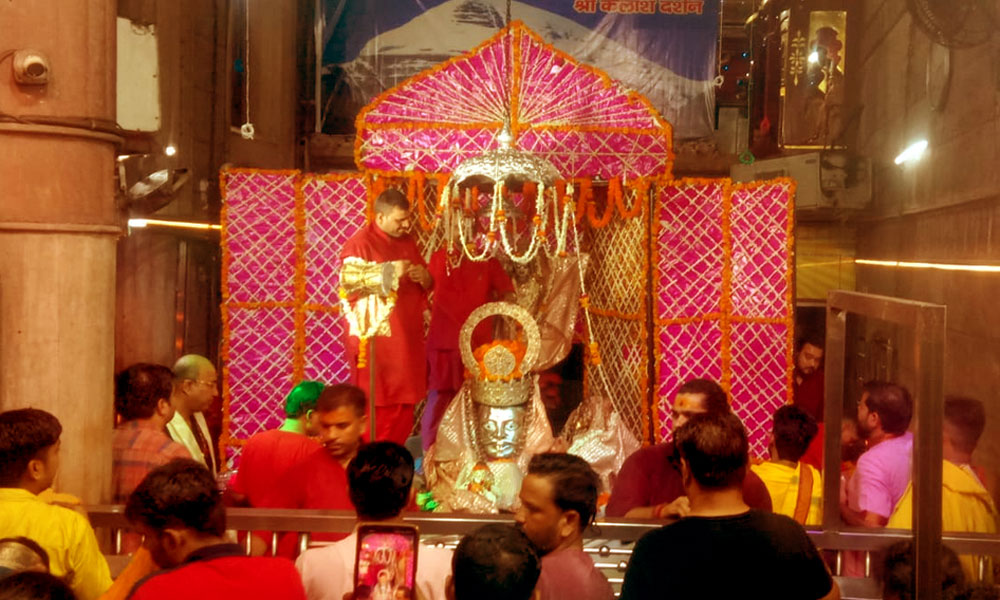
Experience the best of the Agra pilgrimage to Shri Mankameshwar Mandir. Shri Mankameshwar Mandir, considered to be the oldest sacred site in Agra, is located in Rawatpura. This divine temple in Agra is dedicated to Lord Shiva and is one of the most revered Hindu temples in Uttar Pradesh. The Shiva Linga installed in the temple is said to have a history dating back to the Dvapura period. It is believed that it was Lord Shiva who discovered the lingam. The Shiva linga is entirely covered in silver metal.The temple complex includes a sanctum sanctorum where the idol of the presiding deity has been placed. Besides, this popular pilgrimage site in Agra also includes various small temples of Goddess Ganga, Goddess Gayatri, Lord Hanuman, Goddess Saraswati, Kaila Devi, Lord Krishna, Lord Rama, Narasimha, and more. The ambiance of the place is so divine that the temple remains thronged with hundreds of devotees.
Timings: Mangal Aarti, 5:00 am. Abhishek Aarti, 6:00 a.m. Mangala Darshan, 6:30 a.m. to 6:45 a.m. and 5:00 p.m. to 10:00 p.m.
13. Agra Bazaar: Enjoy Shopping in Agra
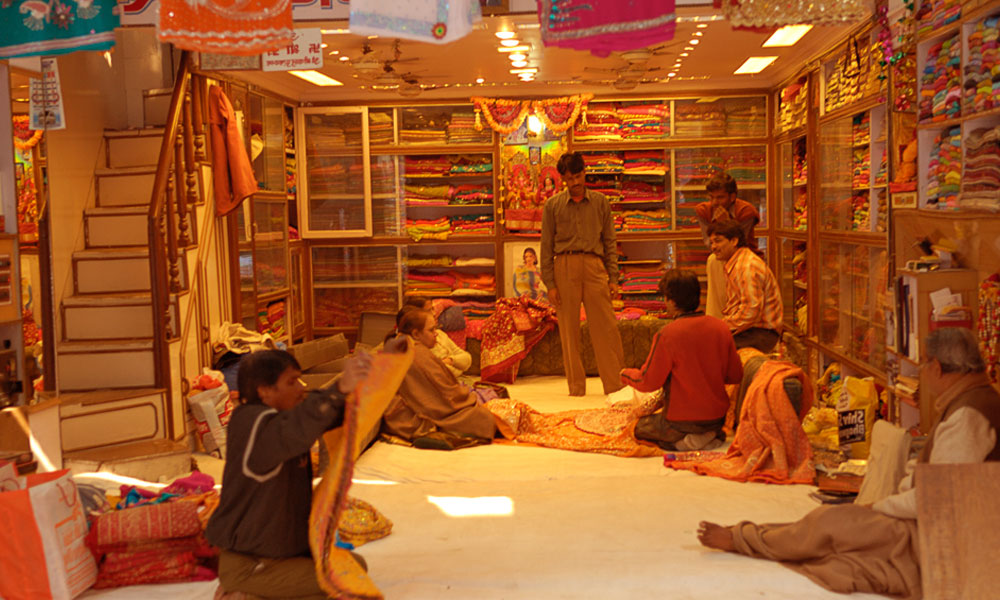
Agra is a shopping haven with a plethora of markets, including TDI Mall, Shah Market, Sadar Bazaar, Subhash Bazaar, Kinari Bazaar, and many more. Elegant marble crafts, leather goods, handicrafts, candies, ornaments, religious items, and other items can be found here. Additionally, there are a number of little reproductions of the Taj Mahal that can be purchased as travel mementos. These marketplaces are usually bustling with throngs of people who are enjoying themselves and taking in the sights.
Timings: The markets remain open from 11:00 a.m. to 9:00 p.m.
14. Wildlife SOS: Agra Bear Rescue Facility

Approximately 200 sloth bears that were saved from the cruel tradition of bear dancing reside at the Wildlife SOS Agra Bear Rescue Facility. In order to protect the bears and provide the community with a lawful means of subsistence, Wildlife SOS helped the Kalandar gypsies who relied on taking advantage of these bears find other sources of income. All of the funds used to operate this center are donated by Wildlife SOS. Indian citizens must pay an admission fee of Rs. 50, while foreign nationals must pay Rs. 500. The bear rescue facility is not supported by these fees. Wildlife SOS provides educational visits on conservation along with opportunities to meet with bear specialists. Visitors are asked to make a gift to support animal care. A receipt is provided for gifts. Animals
Timings: The markets remain open from 9:00 a.m. to 6:00 p.m.
15. Agra’s Multifaceted Charms
Agra, where history, culture, and culinary delights converge, promises an unforgettable journey through time and flavors. Each step reveals a facet of Agra’s rich history, from the eternal love immortalized in the Taj Mahal to the grandeur of the Mughal Empire embodied in Agra Fort and Fatehpur Sikri. The city’s culinary scene tantalizes your senses with a delectable fusion of flavors, while its cultural tapestry weaves tales of tradition and artistry. Beyond the city walls, nature embraces you with serene beauty and wildlife conservation efforts.
This multifaceted city invites you to explore, learn, and savor, making your visit to Agra an enriching experience that lingers in your heart and memory. As you stand before the iconic Taj Mahal or savor the richness of Mughlai cuisine, you’ll come to appreciate the true essence of Agra—a city that harmoniously blends its past and present, offering a timeless journey that transcends mere travel. All this you can enjoy by booking tour packages like Agra Tour Packages, Agra Day Tour Packages, Delhi to Agra Trip, Jaipur to Agra Trip, Delhi to Agra Same Day Tour Packages, and more from our website, www.tajmahaltourguide.com.
Please feel free to contact us at any time for any travel information, tour bookings, tickets, transportation, or hotel bookings in India. Just call or WhatsApp us at +91 98370 44720. You can also visit our official website: www.tajmahaltourguide.com

